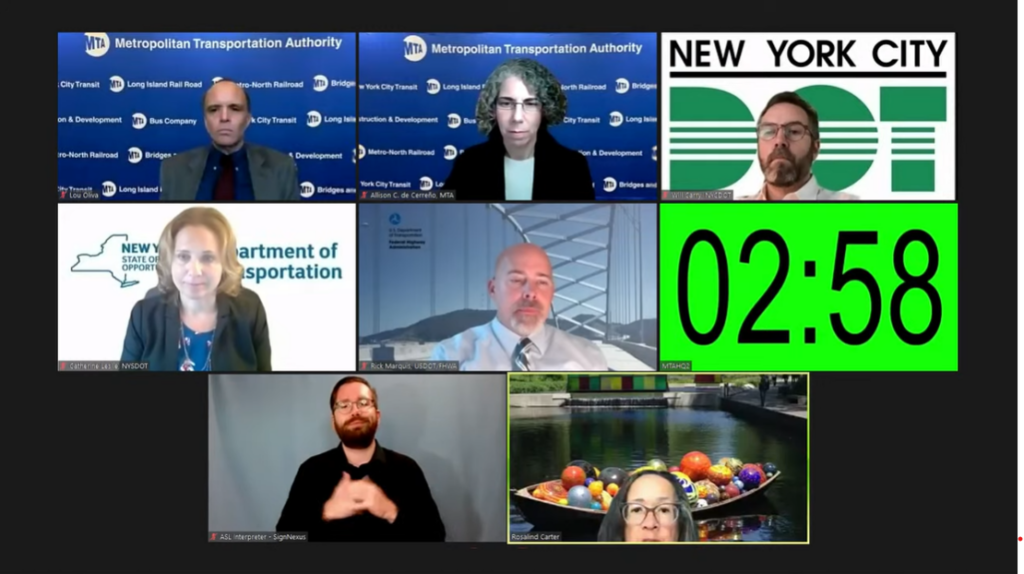Good evening, my name is Rosalind Clay Carter. I currently serve on the Permanent Citizens Advisory Committee to the MTA, and the Metro-North Railroad Commuter Council.
We already knew that Congestion Pricing will reduce traffic, improve air quality, and help fight climate change. More importantly, the data and projections in the Environmental Assessment show that the vast majority of people who enter Manhattan below 60th Street do so using public transit.
Given our mass transit system that permits one to board a train in the northernmost section of the Bronx and travel all the way to Coney Island on a single swipe of a metro card or OMNY tap, it makes sense to implement a toll on the few who still choose to drive — in order to fund transit improvements for the millions of riders who depend on the MTA every day.
Of course, the reality is that there are still “transportation deserts” that deny many residents of the outer boroughs ready access to reliably convenient public transportation, these residents should not bear the burden of Congestion Pricing.
There are still questions to be answered – time to develop answers—Congestion Pricing should be accompanied by other policies to accomplish these goals. Including restrictions or incentives on truck deliveries during peak or off-peak business hours, and variable Congestion Pricing tolls depending on vehicle. We have companies with fully remote staff, surely these same companies can determine how to receive deliveries in off-peak hours.
The transit system design, pricing, schedules, and service-frequency must be reimagined based on the new remote work and lifestyles. Not to mention the need for safe and clean transit vehicles and stations to attract riders and increase revenue.
Congestion can be further improved by trucks not being double parked for deliveries and blocking streets and bus lanes.
I recognize these are not easy solutions but warrant research and exploration as you implement Congestion Pricing.
Thank you for your time and consideration.
